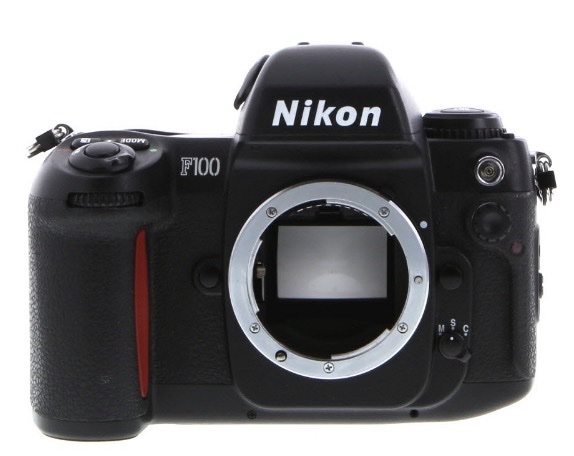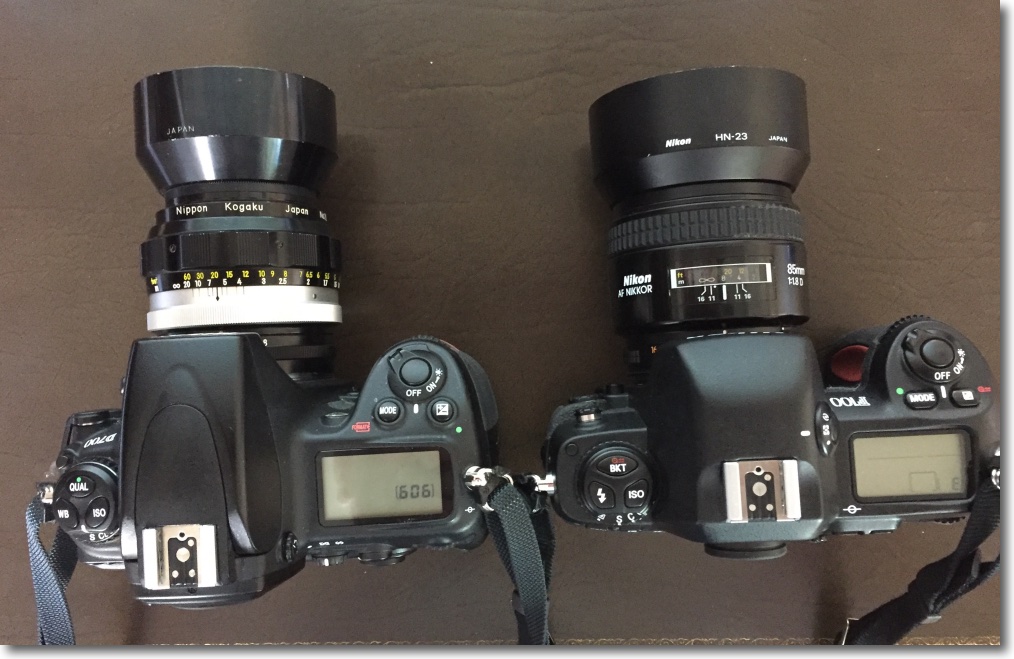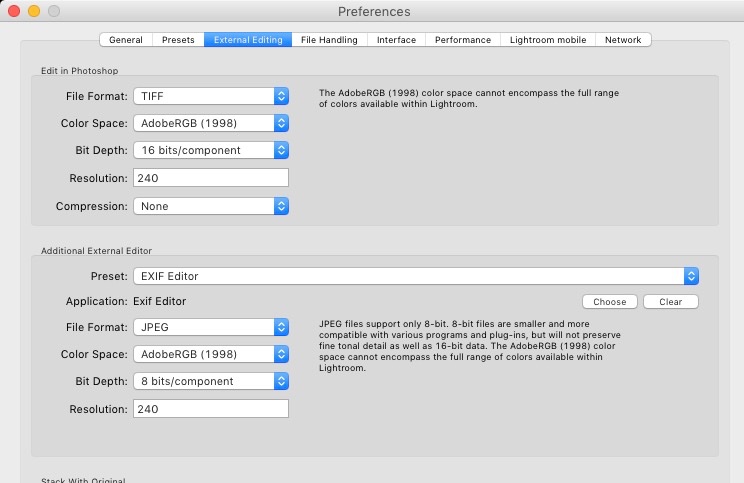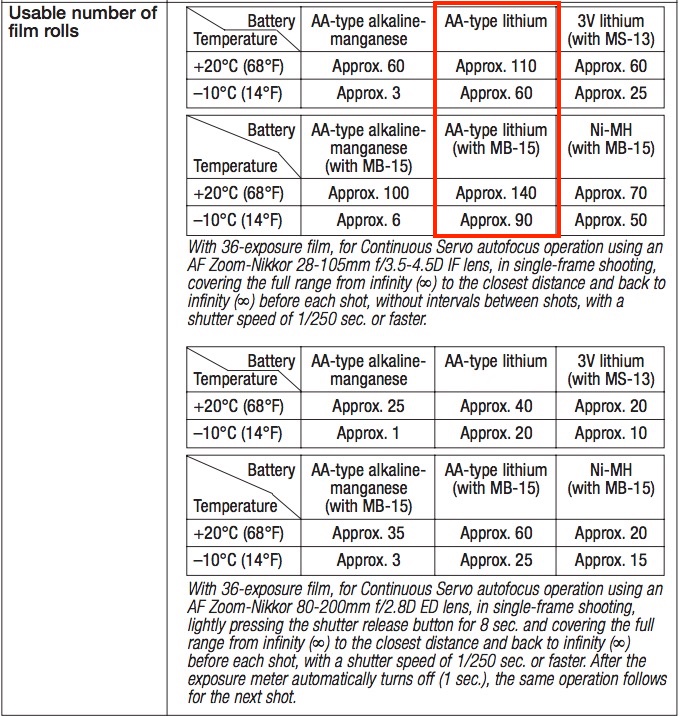Culmination of a film odyssey.
For an index of all my Film related articles, click here.
Spurred on by a friend who is an enthusiastic film user, I determined that a logical approach to finding the right combination of film hardware, services and EXIF software was called for. The market is bursting to the seams with lightly used film cameras available at scrap prices and the renaissance enjoyed by film itself is reflected in the number of labs offering processing and scanning services along with a growing number of emulsions after the nadir of a few years ago.

My film body odyssey – Nikon FE, N90S and F100.
Hardware:
The choice of brand was simple. I have some two dozen F-mount Nikkor lenses, mostly manual focus with AI conversions and chips installed by me. A few are newer AF optics though as recent pieces here have shown, the old lenses are generally superior to the more recent ones, and at lower cost.
Bodies are insanely cheap and there is no earthly reason to save a few dollars by buying a beater, when mint examples can be had for little more. The early metered bodies from the FE/FM series, known for their toughness, can be found for around $100 so I started with a Nikon FE, a small and ergonomically superb offering, far more robust than contemporary Leicas with their rangefinders fading and all sorts of alignment issues, along with rotting rubber shutter blinds where Nikon uses titanium. And at 10% of the cost of those Leicas, what’s not to like? Mine ran me $100 plus $30 for a better focus screen. The FE falls naturally to hand and I had a blast using it but I found that the absence of a focus confirmation LED in the finder was a feature sorely missed by my aging eyes. Use a lens f/2.8 or slower, even with the improved FM3 focus screen installed, I was never quite sure critical focus had been established and was often sawing the focus collar back and forth to get there.
Thus the next step was to find a Nikon film body with autofocus which, with a manual Nikkor fitted, conferred the advantage of that confirmation light. Along came a Nikon N90s, another body renowned for its durability and costing a whopping $50 in the original box, no less. Heavier than the FE owing to the focus and film advance/rewind motor, the body is a delight to use with AF Nikons or unchipped MF ones, but the aftermarket chips installed by me on every one of my manual focus Nikons refuse to communicate with the body’s exposure meter and are thus useless. With AF Nikkors the body works perfectly. The only known issue is a tendency for the chintzy coating on the back to degrade and get sticky, but my body came with that removed, exposing the black plastic underneath. Isopropyl alcohol is the indicated solvent here and the result looks fine, matching the finish of the rest of the body.
So a better mousetrap was called for and it came along in the guise of the Nikon F100, meaning the $200 I splashed out wildly on the mint body and high capacity battery grip was financed by the proceeds of sale of the FE, the N90S and the F100’s battery grip which does little for this occasional snapper other than adding needless weight and bulk.
The F100 is superb in every way. The body takes four AA batteries like the N90s, disposes controls in a manner almost identical to those on my favorite digital body, the D700 and comes with an eyepiece diopter adjuster built in which is a boon for non-stock eyesight. With four AA cells installed in the body holder the external battery holder with its 6 AA batteries can be dispensed with leaving a body barely heavier than the N90S. Unlike with the FE and N90s you cannot change the focus screen, but you do not need to. The focus confirmation light works perfectly. The apertures of my MF Nikkors are correctly registered by the metering system with aperture priority exposure automation. That’s a huge deal as I have many and they are all here to stay. And the F100 focuses AF Nikkors very fast. Weaknesses? Rumored to be very tough on batteries, but no problem for a ‘one film a week’ guy, plus they are common and inexpensive AAs. The earlier bodies had a fragile rewind fork – you can identify it easily as it’s pointed. If your body’s s/n is greater than 21673xx you will find that the spigots on the rewind fork are now squared, not pointed, and much more robust. (The s/n is engraved black on black underneath the bayonet mount at the base). Finally, the perfect body, though the sensual pleasure of the FE’s manual film advance is gone.
In addition to the fragile rewind fork on earlier bodies (unlikely to be an issue with lightly used bodies), the only other issue with the F100 I have noted on chat boards is with the automated start and rewind of the film.
It appears that if you set Custom Settings to thread the film when the door is closed, and to rewind it after the last shot, the system can fail and start rewind part way through the roll. I believe the mechanism Nikon uses to determine when to start automated rewind is simply to measure the current demand of the advance motor. When the film is at the end, the current demand spikes and the advance motor goes into reverse and commences rewind. But a like current demand – triggering a false ‘end of film’ indication – can occur with a stiff cassette spool and/or a tight felt trap, which would simulate the ‘end of roll’ condition part way through the roll
Custom Settings are set thus:
The two Custom Settings for automated film loading and rewind are 8 and 1, respectively:

You want to make sure these are both set to ‘0’, the default setting, thus defeating the automation.
To manually commence rewinding the film at the end of the roll you simultaneously depress the ‘BKT’ (top left) and the ‘+/-‘ buttons (top right). (In the later D700 this button pair formats the CF storage card. Neat.) Each is marked with a red symbol.
The other Custom Setting to note concerns the use of the lens’s aperture ring to set aperture rather than using the front top wheel (sub-command dial), custom setting #22:
This is essential to enable aperture ring control for my MF chipped Nikkors as I cannot control the setting of the aperture using the sub-command dial, and as I also much prefer to use the lens’s aperture ring. So my Custom Setting #22 is set to ‘1’ and all my old lenses work properly.

By the time the F100 was made, Nikon’s design layout was pretty much firmed up.
The much later D700 is on the left.
Processing and scanning:
No one in his right mind wants film strips returned. A high quality scan of the processed film is what is called for and as mass scanner quality has peaked, holding on to film strips in the hope of better scans down the road is a quixotic approach. After a couple of false starts with labs in California, I found that Sharpprints.com, in Wisconsin of all places, was just the ticket. Excellent processing with high attendant volume assures fresh chemicals, complemented with high definition scans from their Noritsu scanner. Further, downloads are available fast and there are no downloading issues. And they are almost 40% cheaper than the uncaring and unresponsive coastal labs – $14 versus $22.50 a roll. The limitation is that this lab only processes color film requiring C41 chemicals (color negative emulsions), and does not process E6 color slide stock. They also process TriX and other monochrome film in Kodak HC110 developer.
EXIF data:
Other than telling you the scanner manufacturer’s name, no EXIF data is present on scanned film files. I find such data to be essential as I tend to search for images in my catalog by camera body and lens used. Thus I resort to a $10 application named ‘EXIF Editor’, available in the Apple OS X App Store.
It’s a tad clunky but can be integrated into LR for the roundtrip in Lightroom->Preferences->External Editing:

EXIF Editor set as an external editing option.
Batteries:
The F100 has something of a reputation as a battery eater. My body came with the auxiliary battery holder which holds 6 AA batteries rather than the 4 in the body’s handgrip. The latter must be removed when the auxiliary MB-15 holder is attached – see the first image in this article. The battery holder appears to add 40% capacity based on Nikon’s data:

Note the greatly increased power draw with big, long lenses
like the 80-200 f/2.8 AFD zoom – lower section, above.
I immediately sold my battery holder ($50) as it adds weight and bulk out of proportion to its sole utility value which is the addition of a vertical shutter release. You don’t need it. Further, cheap lithium batteries are now abundantly available – I paid $1.50 per cell at Amazon, and the table above suggests no one needs the external holder. If you must change batteries fast, new in-body Nikon MS-12 AA battery holders remain available for under $25 – in fact I had to buy one as it was missing from my body. Simple pre-load one with batteries of your choice and keep it in your pocket.
The results of this discovery process:
- Three business days from mailing to availability of high quality downloadable scans.
- The charm of using analog film in a digital world, with all the attendant benefits and challenges.
- Properly EXIF indexed data files in my Lightroom catalog.
- Negligible financial outlay.